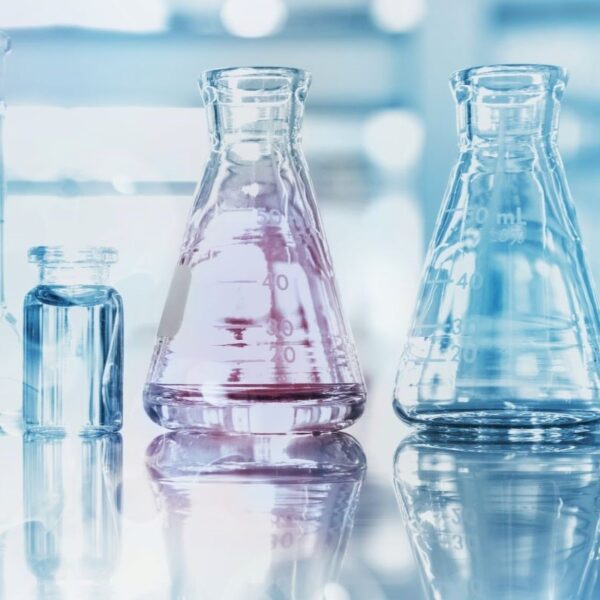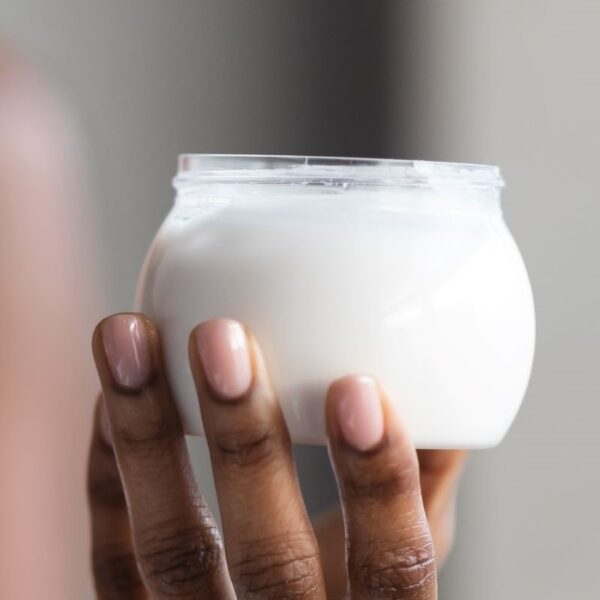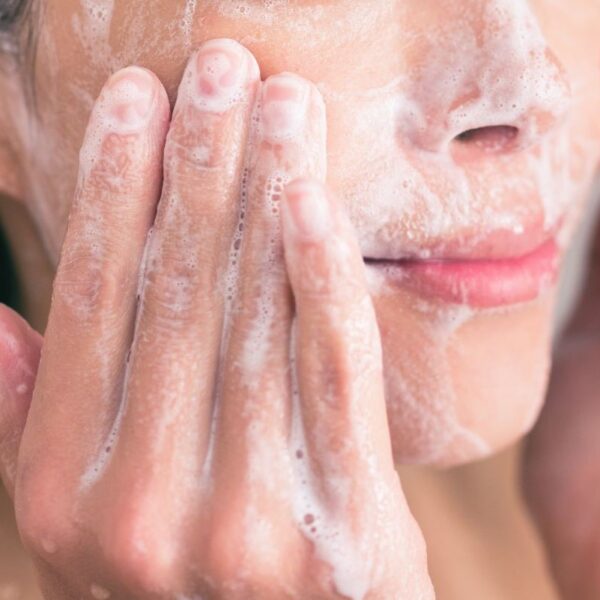DMDM hydantoin is a widely used antimicrobial agent in cosmetics and personal care products. As a versatile and cost-effective preservative, it provides a high level of antimicrobial activity. This article will discuss the uses and benefits of DMDM hydantoin in cosmetics and personal care products.
What is DMDM Hydantoin?
DMDM hydantoin is an antimicrobial formaldehyde-releasing preservative. It comes as a white, crystalline powder soluble in water and is commonly used as a preservative in cosmetics to extend shelf life. It is remarkably effective at inhibiting the growth of bacteria, yeasts, and molds. As a common ingredient in both cosmetic products and skin care products, it is functional at low concentrations. DMDM hydantoin is fully compatible with surfactants, emulsifiers, and proteins — and remains stable over wide pH and temperature ranges.

DMDM hydantoin works by releasing small amounts of formaldehyde over time. Formaldehyde is a powerful antimicrobial agent that prevents the growth of bacteria, fungi, and other microorganisms that can spoil cosmetics and personal care products. DMDM hydantoin is often combined with other preservatives to create a broad-spectrum antimicrobial effect.
Use of DMDM Hydantoin Cosmetics and Personal Care
In cosmetic and skin care products, DMDM hydantoin is extremely easy-to-use, highly effective in a wide pH range, and does not modify the appearance of finished products. DMDM hydantoin is one of the most potent preservative agents against Gram-negative bacteria & Gram-positive bacteria; it is also active against molds. It can be particularly effective in detergent-based formulations with some inherent antimicrobial activity but is susceptible to the growth of some types of microorganisms.
Preservatives like DMDM hydantoin are valuable in ensuring the stability and safety of cosmetics and personal care products. These products are easily contaminated by the amount of moisture, making them less effective and potentially unsafe.
Applications in Cosmetics and Personal Care
DMDM hydantoin can be easily incorporated into various formulations. Because of its high water solubility, it becomes easy to incorporate in high water content formulations. It shows good compatibility in particularly aqueous phases therefore, it is recommended to be used in such types of formulations as body mists, toners, etc.
Product Examples
Some common products you can find DMDM hydantoin in include:
| Type | Examples |
|---|---|
| Haircare | Shampoos, Conditioners, Gels, Mousses |
| Body & Skincare | Toners, Gels, Lotions, Creams, Wipes, Moisturizers, Cleansers, and Body Washes |
| Makeup | Foundations, Eyeliners, Mascaras, Powders, and Wipes |
| Sun Products | Sunscreens, Suntan Lotions, and Aftersun Creams |
| Bath Products | Shower gels, Bubble Baths, Hand Cleaners, and Intimate Wipes |
| Babycare | Shampoos, Bath Products, Gels, Lotions, Creams, Powders, and Wipes |
| Raw Materials | Surfactants |
Properties of DMDM Hydantoin
| Appearance at 25 °C | Clear Liquid, Low Viscosity |
| pH (1% Aqueous) | 6.5-7.5 |
| Molar Mass | 188.18 g/mol |
| Viscosity, cps at 25°C | 60-75 |
| Solubility | Highly Soluble in Water |
| Odor | Low, Characteristic |
| Shelf Life | 24-36 months |
DMDM Hydantoin Formulation Considerations
Moisturizing Body Cream
| Phase | Trade Name | INCI Name | Weight % |
|---|---|---|---|
| A | – DI Water – TEA 99% | – Deionized Water – Triethanolamine | 50.00 0.08 |
| B | Jeesperse® ICE-T-LB-21 | Cetyl Alcohol, Glyceryl Stearate, Stearic Acid, Glycol Stearate, Acrylates/C10-30 Alkyl Crosspolymer | 7.50 |
| C | Glycerin 99.7% | Glycerin | 4.00 |
| D | Jeechem® IPP | Isopropyl Palmitate | 3.20 |
| E | Petrolatum | Petrolatum | 3.00 |
| F | – DI Water – Jeesilc® PDS-350 | – Deionized Water – Dimethicone (Polydimethylsiloxane) | 28.18 2.00 |
| G | Lactic Acid, 88% | Lactic Acid | 0.01 |
| H | Dissolvene NA2 | Disodium EDTA | 0.01 |
| I | – Fragrance – TiO2 Ultrafine | – Citrus Type B – Titanium Dioxide | 0.40 0.30 |
| J | – Jeecide® DMDM Hydantoin – Jeecide® IPBC 10% | – DMDM Hydantoin – Iodopropynyl Butylcarbamate, Propylene Glycol | 0.50 0.10 |
Formulation Procedure
- Mix water and TEA first using an overhead prop mixer in the main tank.
- Add Phase B Jeesperse® ICE-T-LB21 to the main tank, and mix until homogeneous.
- Add Phase C Glycerin mix well and continue adding Phase E Petrolatum mix until homogeneous.
- Add Phase D Jeechem IPP and mix well.
- Add Phase F – water to the main tank. Mix until homogeneous.
- Add Phase G Lactic Acid and Phase H Disodium EDTA. Mix well.
- Add Phase I Titanium Dioxide. Wait until the powder is completely dispersed, then add Phase J preservatives.
- Make final target property checks for appearance, viscosity, and pH.
Other Formulation Considerations
- Compatibility of pH range: 3–9
- Compatible with anionic, cationic, and nonionic systems
- Add during the cool-down phase of the process, where possible.
- Short temperature bursts are also acceptable in a closed system, up to 80°C
- Not for use in oral and lip products
- Generally used at 0.2-0.5% alone or in combination with antifungals in more complex formulations
- It is synergistic with parabens, IPBC, other preservatives & preservative boosters
Stability & Storage Conditions
- It is stable and active in the pH range of 3-8 and has no effects on the Color, odor & viscosity of cosmetics
- May tolerate working temperatures up to 80°C
- Prolonged exposition to temperature <10°C may cause crystallization of the solution
- Storage—Store between 0°C(32°F) and 32°C(90°F)
DMDM Hydantoin Safety & Regulatory Considerations
DMDM hydantoin is approved for cosmetic and personal care products under established safety limits by the Cosmetic Ingredient Review and other scientific panels. DMDM hydantoin preservatives have a strong safety history based on comprehensive toxicology results and widespread use. Toxicology studies performed over the years rate DMDM hydantoin as one of the safest preservatives available today. DMDM hydantoin has been tested extensively to meet personal care regulatory standards in key global regions.
The Food and Drug Administration (FDA) recognizes DMDM hydantoin and other formaldehyde-releasing chemicals as potential allergens. However, no evidence supports that DMDM hydantoin in cosmetics is unsafe for those not allergic to it.
Identification Numbers
| CAS Number | 6440-58-0 |
| EC Number | 229-222-8 |
Global Regulatory Information
| European Union | – Listed in Annex V to Regulation EC/1223/2009 – Finished products containing DMDMH must be labeled with the warning “contains formaldehyde” if the (free) formaldehyde concentration exceeds 0.05% – Maximum concentration 0.6% DMDMH |
| Japan | – Listed in the positive list – The following warning must be labeled: “should not be used by infants or by people who are hypersensitive to formaldehyde.” – Can be used at a level up to 0.3% DMDMH for rinse-off only – Not permitted in oral products |
| United States | – Approved by CTFA for both rinse-off and leave-on applications – Can be used at a level up to 0.6% DMDMH |
Fun Facts About DMDM Hydantoin
- DMDM hydantoin is a formaldehyde-releasing preservative that releases small amounts of formaldehyde over time to prevent microbial growth in cosmetics and personal care products.
- DMDM-hydantoin is now being experimented with to be used to preserve Biological specimens as an alternative to formalin which is less suitable for preserving DNA than ethanol. The flammability of ethanol and resulting storage requirements deemed necessary by fire regulatory groups suggest the need to pursue new fluid preservation alternatives
- While DMDM hydantoin is widely used in cosmetics and personal care products, it can also be found in other household products such as cleaning solutions and laundry detergents.





